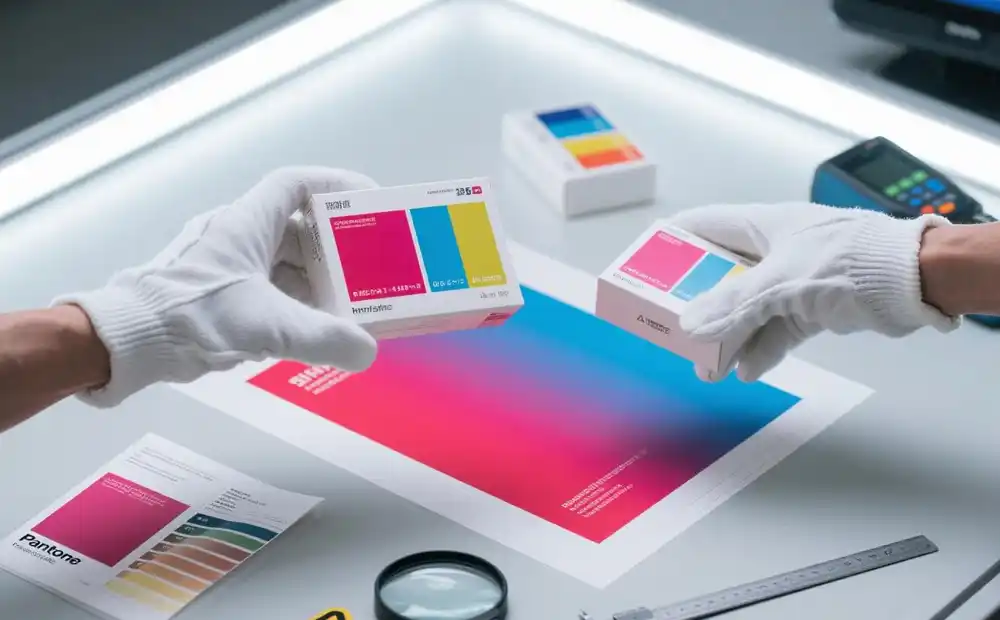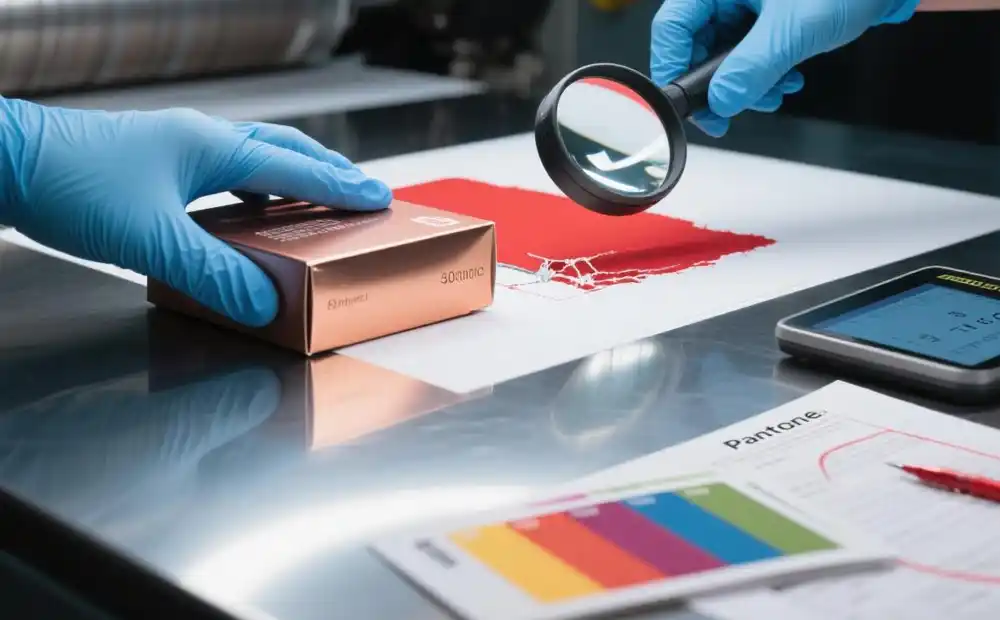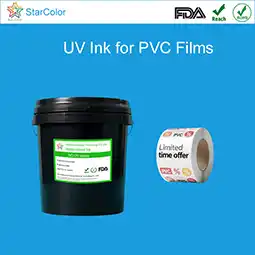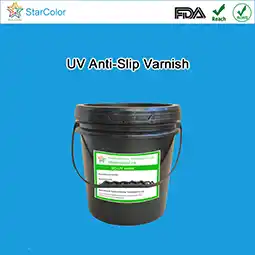How to Enhance Print Sharpness with Water Based Flexo Inks
Date: Aug 15 2025 From: Star Color Views:
This article systematically breaks down practical solutions to enhance printing sharpness of water-based flexographic inks from three dimensions—ink property optimization, equipment parameter calibration, and process control upgrades—providing actionable technical guidance with data and case studies.
I. 4 Causes of Insufficient Sharpness in Water-Based Flexographic Inks
To improve printing sharpness, it is first necessary to identify key pain points affecting water-based ink imaging quality, as these issues are often interrelated and cause chain reactions:1. Uneven Pigment Dispersion
Poorly dispersed pigment particles in water-based inks (particle size >8μm) tend to agglomerate in anilox roller cells, leading to uneven transfer during printing and resulting in "pinholes" or "color spots" in patterns. Testing data shows: When pigment particle size is reduced from 10μm to 3μm, the micro-sharpness of printed patterns improves by 40%, and the color spot defect rate drops from 5% to 0.5%.2. Viscosity Fluctuations
Water-based ink viscosity is significantly affected by temperature and pH (viscosity decreases by approximately 10% for every 5℃ temperature rise). Low viscosity causes excessively thick ink films, leading to over-spreading of dots; high viscosity results in poor ink transfer, causing local ink starvation and "broken strokes."3. Mismatched Drying Speed
Water-based inks dry through water evaporation. Slow drying causes the ink layer to contact the substrate before curing, leading to "edge bleeding"; fast drying may cause premature surface film formation, trapping moisture in the bottom layer and forming "bubble pinholes," damaging pattern integrity.4. Equipment Incompatibility
Equipment issues such as insufficient anilox roller line count, incorrect doctor blade angle, and low plate precision exacerbate performance flaws in water-based inks. For example, printing 600dpi patterns with a 400-line anilox roller results in insufficient dot-carrying capacity, reducing sharpness by over 30% compared to a 600-line roller.
II. Ink Formulation Optimization
The intrinsic properties of water-based flexographic inks are central to sharpness. Formulation design and parameter control are needed to enhance pigment dispersion, rheology, and drying coordination.1. Controlling Pigment Particle Size and Dispersion Stability
- Nano-scale grinding process: Control pigment particle size to 3-5μm (90% of particles <8μm) to ensure uniform filling of micro-cells in high-line-count anilox rollers.
- Adding dispersing agents: Introduce polymer dispersants to prevent pigment agglomeration through charge repulsion, ensuring ink sedimentation rate <1% after 72 hours of standing, avoiding local concentration spikes due to dispersion failure.
2. Precise Control of Ink Viscosity and pH Value
- Viscosity range locking: Set baseline viscosity based on printing scenarios: 20-25cps for fine pattern printing, 25-30cps for large solid-area printing. Monitor viscosity hourly and adjust promptly if deviation exceeds ±2cps.
- Stable pH control: Maintain ink pH at 8.0-8.5 to prevent resin flocculation due to pH drops, which causes uneven ink layers.
III. Process Control Upgrades: Dynamic Adjustments for Stable Output
Water-based flexographic inks are sensitive to environmental and process parameters. Fine-tuned control is required to reduce variable interference and ensure stable sharpness.1. Constant Environmental Temperature and Humidity Control
- Constant temperature and humidity workshop: Maintain workshop temperature at 23±2℃ and humidity at 50±5%. Turn on dehumidifiers when humidity exceeds 60% to avoid smudging from reduced ink drying speed; activate humidifiers when humidity is below 40% to prevent viscosity spikes caused by rapid water evaporation.
- Ink temperature preconditioning: Let ink stand in the workshop for 2 hours before use to align its temperature with the environment, reducing viscosity fluctuations caused by temperature differences (each 5℃ temperature difference can lead to an 8% viscosity deviation).
2. Coordination of Drying Curve and Printing Speed
- Segmented drying optimization: Adopt "three-stage drying":
- First stage (closest to the plate): 40-50℃ low-temperature pre-drying to evaporate surface moisture;
- Second stage: 60-70℃ medium-temperature accelerated drying to promote resin film formation;
- Third stage: 50-60℃ cooling and setting to avoid ink layer embrittlement.
This method improves drying uniformity by 30% and reduces edge bleeding rate from 8% to 2%.
- Speed-drying matching: Set printing speed based on ink drying characteristics, ensuring ≥3 seconds of drying time per color station. For example, when printing with a 600-line anilox roller, control speed at 200-250 meters/minute to prevent insufficient drying due to excessive speed.
3. Substrate Preprocessing and Compatibility Enhancement
- Substrate surface tension optimization: Film substrates (e.g., BOPP, PET) require corona treatment before printing to ensure surface tension ≥38dyn/cm, enhancing ink adhesion and spreading uniformity. Insufficient surface tension causes ink "cratering," reducing local sharpness.
- Substrate flatness control: Use substrates with thickness deviation ≤5μm to avoid uneven pressure from substrate wrinkling, reducing "local ghosting." Paper substrates should be humidity-conditioned 24 hours in advance, with moisture content controlled at 6-8% to prevent registration errors from water absorption deformation during printing.
IV. Case Verification: Sharpness Improvement Practice at a Food Packaging Enterprise
A company using water-based flexographic inks for snack packaging long struggled with "severe dot gain (50% dots actually enlarged to 22%) and text edge burrs," with a customer complaint rate of 10%. After the following adjustments:- Ink optimization: Switched to StarColor nano-pigment water-based inks (particle size 3-5μm), stabilized viscosity at 25cps, and controlled pH at 8.2;
- Equipment upgrades: Replaced 400-line anilox rollers with 600-line ones, adjusted doctor blade angle to 52°, and set pressure to 1.8bar;
- Process adjustments: Stabilized workshop humidity at 50%, adopted a "45℃-65℃-55℃" three-stage drying curve, and reduced printing speed to 220 meters/minute.
After adjustments, 50% dot gain dropped to 8%, text edge sharpness improved by 50%, customer complaint rate fell to 0.5%, and reject rate decreased from 6% to 1.2%, reducing monthly losses by approximately $4000.

Conclusion
Improving printing sharpness of water-based flexographic inks requires systematic coordination of "ink formulation-equipment parameters-process environment," not just adjustments to a single link.In the trend of balancing environmental protection and quality, precisely controlled water-based flexographic technology can fully achieve printing sharpness comparable to solvent-based inks, becoming the preferred solution for green printing.
 RU
RU EN
EN CN
CN















